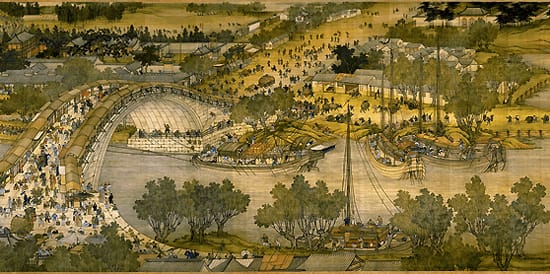The paper titled “Health technology assessment to inform decision making in China: progress, challenges, and sustainability” gives an overview of health technology assessment (HTA) development, problems, and sustainability in China.
Summary of the paper
1. China has integrated health technology assessment (HTA) to decide the prices of medicines. This has led to more research on HTA and its use in making healthcare policies.
2. The paper emphasizes the importance of use evidence and ethics to make decisions about healthcare to ensure rational decision-making in healthcare.
3. Challenges highlighted include insufficient HTA staff and expertise, they face difficulties in synthesizing multi-level evidence from multiple sources for decision-making.
4. The paper emphasizes the need to strengthen the HTA system in China through capacity building, improving data availability and accessibility, and modifying HTA methodologies to meet local needs.
Introduction to Health Technology Assessment
Definition: Health Technology Assessment (HTA) is a systematic and multidisciplinary approach (using scientific, social, economic, and ethical considerations) to evaluate health technologies and services benefits, properties, and costs. All this is done to inform the policies whether the product/service is value for money in terms of its potential impact on people’s health.
“Health Technology Assessment (HTA) is a process used to evaluate the safety, effectiveness, and cost-effectiveness of healthcare technologies in China. It is applied to various stages of a technology’s life cycle, such as post-market, reimbursement/benefit package coverage, utilization management (monitoring and evaluation), and reassessment, to ensure evidence-based healthcare decisions and efficient resource allocation. Once a technology is implemented, HTA identifies issues or barriers to adoption, assesses its impact on health outcomes and resource utilization, and reassesses its performance, safety, and efficacy after initial introduction or changes in use or implementation. This helps identify new evidence or insights that inform future decision-making related to the technology” The assessment process for any given technology or intervention takes an average of 6 to 12 months, with a maximum duration under pharmaceutical/medicines.
In 2022, a global survey by the World Health Organization (WHO) revealed that 82% of countries, including China, have a formal way of collecting data on new health technology, with 62% of them referring to this process as Health Technology Assessment (HTA).

Stages of Development of Health Technology Assessment in China
Health Technology Assessment (HTA) has played a crucial role in healthcare decision-making in China since the 1990s. The development of HTA in China can be divided into three stages:
1. First stage (1990s and early 2000s): The establishment of academic HTA centres, pilot projects, and attempts to use HTA findings to inform policy-making. The first HTA centre was founded at Shanghai Medical University in 1994, and the Centre for Pharmacoeconomic Evaluation and Research was established at Fudan University in 2002 to kick-start pharmaceutical research.
2. Second stage (2006-2016): The emergence of more HTA organizations and activities. The years 2013-2016 saw the development of national HTA guidelines and the establishment of the China HTA Research Network to prioritize evidence-based decision-making and optimize resource allocation.
3. Third stage (2017-present): Exploring approaches to inform policy-making and applied HTA evidence to update the National Reimbursement Drug List for the first time in 2017, followed by the inclusion of anti-cancer drugs in the list in 2018, and the decision to use HTA evidence routinely in review processes in 2019 and 2020 by the National Healthcare Security Administration. HTA has also been incorporated into policy-making procedures, such as the regulation of clinical technologies, public health screening programs, intervention programs for maternal and child health, and regional health planning for high-tech medical equipment, allocation, and performance management.

Publications with “health technology assessment” as key word from 1980-2020.
China has seen an increase in Health Technology Assessment (HTA)-related publications over the past 40 years, indicating growing research interest and activity in the field. A total of 96,279 articles by Chinese researchers published in English and Chinese between January 1, 1980, and December 31, 2020, were found using search terms such as economic evaluation, HTA focused ethics research, and meta-analysis. These publications serve as a proxy indicator for gauging the development of HTA in China.

Challenges and Opportunities for Health Technology Assessment in China
Health Technology Assessment (HTA) in China faces various challenges and opportunities. The challenges include a lack of policy arrangements, insufficient expertise and staff, data availability issues, and the absence of standardized methodology and quality control measures. Most HTA studies in China are currently sponsored by manufacturers, raising concerns about potential conflicts of interest. There is a need for impartial agencies with public funding to ensure transparency and objectivity in HTA processes. The country also faces difficulties in integrating multidimensional assessments into decision-making processes and in indigenizing methodological approaches to meet national or local needs, particularly in assessing the efficacy and cost-effectiveness of traditional Chinese medicine. On the other hand, the rapid development of health technology in China has created opportunities to strengthen HTA. However, addressing the challenges is crucial to realizing the full potential of HTA in the country.









